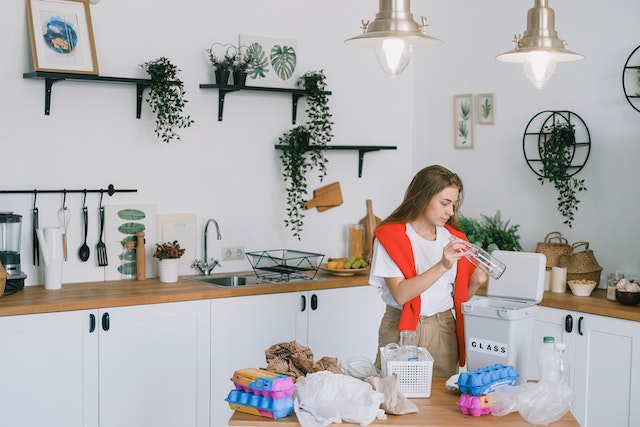As the world becomes increasingly more technological and reliant on disposable items, the amount of non-recyclable waste continues to grow. It is now more important than ever before to find ways to reduce the volume of this waste. Fortunately, there are several steps that everyone can take to make a difference. By working together, we can make a significant impact on reducing our reliance on disposable items and help preserve our planet for future generations.
Cut back on single-use items
Single-use items are a major source of non-recyclable waste. To reduce the amount of waste you produce, try to cut back on the number of single-use items you use. For example, instead of using disposable cups, plates, and utensils, use reusable dishes. If you must use single-use items, look for items that are made from recyclable materials. For example, instead of using plastic straws, use paper straws. By making small changes in your habits, you can make a big impact on the amount of waste you produce.
Make use of a compactor
Compactors are machines that reduce the size of materials such as paper, plastic, and metal by compacting them into bales or bundles. This process not only reduces the volume of waste but also makes it easier to transport and store. Compactors are commonly used in recycling facilities, but they can also be used in businesses and households to reduce the amount of non-recyclable waste. There are many different types of compactors for sale in New Mexico, so it is important to choose one that is suitable for the materials you need to compact. Compactors can be purchased new or used, and many companies offer rental programs. If you are interested in reducing the volume of non-recyclable waste in your home or business, consider investing in a compactor.
Recycle what you can
Most communities have recycling programs that accept items like glass, metal, and plastic. By recycling these materials, you can prolong their life and reduce the amount of new material that needs to be produced. Furthermore, recycling helps to conserve energy and resources, as well as reduce greenhouse gas emissions. In other words, recycling is a win-win for the environment. So next time you have some waste to dispose of, make sure to recycle what you can.
Compost food scraps
American households produce a lot of waste – on average, about 4.5 pounds per person per day. A large portion of this waste is made up of food scraps, which end up in landfills where they decompose and release methane, a greenhouse gas that contributes to climate change. However, if you have a compost bin, you can reduce the amount of food waste you produce. Composting involves breaking down organic matter, such as food scraps and yard waste, into a nutrient-rich soil amendment that can be used to improve plant growth. Furthermore, by composting your food scraps, you can reduce your methane emissions and help to slow down the effects of climate change.
Avoid purchasing products with excessive packaging
It’s no secret that our society produces a lot of waste. From single-use coffee cups to disposable diapers, it seems like we’re always throwing something away. And much of this waste is non-recyclable, meaning it will end up in a landfill where it will sit for centuries. One way to reduce the volume of non-recyclable waste is to avoid purchasing products with excessive packaging. Many products come with more packaging than is necessary, and this packaging often can’t be recycled. So next time you’re at the store, take a moment to consider whether you really need that product – and if so, whether there’s a less wasteful option. Every little bit makes a difference!
Donate unwanted items
Another simple way to reduce the volume of non-recyclable waste is to donate unwanted items. Instead of throwing away clothes, furniture, or other household items, see if there is someone who could use them. There are many organizations that accept donations, and by giving these items a new home, you can help to keep them out of landfills. In addition to reducing waste, donating items is a great way to help those in need. So next time you’re getting ready to toss something in the trash, take a moment to see if someone else could use it first.
Buy in bulk
Anyone who has ever tried to reduce their trash output knows that it can be a difficult task. Packaging from food and other consumer goods creates a significant amount of waste, and much of it is not recyclable. However, there are some steps that we can all take to reduce the volume of non-recyclable waste that we generate. One simple way to do this is to buy in bulk. When you purchase larger quantities of items, you often need less packaging overall. This can help to reduce the amount of waste that you need to dispose of. In addition, buying in bulk often saves money in the long run, so it’s a win-win situation!






